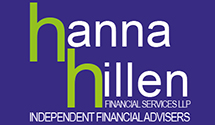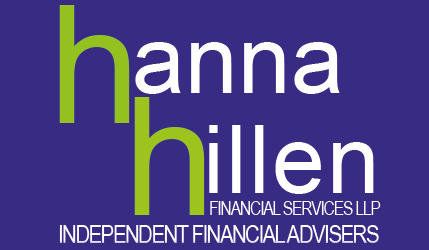Not Much of a Giveaway Budget

This year’s March Budget was the last Spring Budget, as Mr Hammond has said that from now on Budgets will be presented in Autumn, with the Spring reserved for a financial statement. Thus in 2017 we will have two Budgets, with the second probably arriving in November.
The fact that there will be another Budget this year probably explains why the most recent Budget seemed rather thin – even the accompanying documents weighed in at much less than the usual Budget heavyweight forest. Nevertheless, there were some important points to emerge (or re-emerge) on 8 March. In this newsletter we look at the major changes and some of the consequences.
INCOME TAX
Personal allowance
The personal allowance for the new tax year, 2017/18, will be £11,500, unchanged from the previous Chancellor’s chosen figure. Mr Hammond repeated the pledge that the allowance will rise to £12,500 by 2020/21, but gave no indication of the trajectory. The odds are that the Chancellor was saving some good news for Autumn.
There was no increase in the £100,000 income threshold at which the personal allowance starts to be phased out, creating an effective marginal rate of tax of 60%. The income band where this rate applies now runs from £100,000 to £123,000. The corollary of the high tax rate is that if you make pension contributions while trapped in that band, you could benefit from 60% tax relief.
Tax bands
The basic rate band (for the UK excluding Scotland) rises to £33,500, meaning that the higher rate threshold (personal allowance + basic rate band) will be £45,000, an increase of £2,000 on 2016/17. In Scotland, the basic rate band will shrink by £500 (to £31,500), thereby keeping the higher rate threshold unchanged at £43,000. Confusingly, under the special rules for Scottish tax, this lower basic rate band will only apply to non-savings, non-dividend income, so some Scots, or more likely their accountants, will be juggling with two basic rate bands when calculating total tax liabilities.
The basic rate band was the only band that moved. The starting rate band of 0% on savings income remains at £5,000 and the additional rate threshold is still £150,000, as it was when it started life in 2011/12. With inflation on the rise, such freezes are stealth tax increases.
Dividend allowance and personal savings allowance
The personal savings allowance (£1,000 for basic rate taxpayers and £500 for higher rate taxpayers) was frozen for 2017/18, as was the £5,000 dividend allowance.
The big surprise – and the largest revenue-raiser announced in the Budget – was that from 2018/19 the dividend allowance will be reduced by 60% to £2,000. Ostensibly the aim is to discourage incorporation by the self-employed, the same reason George Osborne offered when introducing the allowance from 2016/17 as part of a dividend tax reform. While the cut will reduce the advantages of incorporation, it will by no means eliminate them – most small business owners will be £225 worse off because the dividend allowance that they lose will fall into their basic rate band. However, the dividend allowance cut does not just hit small businesses; it will also hit some investors.
The arrival of the dividend allowance in April last year created winners and losers. The forthcoming reduction will only create losers – anyone with more than £2,000 of dividend income. The effects of the two changes are shown in the table below.
| Taxpayer
(Dividend Rate) |
Worse off than in 2015/16 if dividends exceed | Maximum extra tax
2018/19 – 2016/17 |
|
| 2016/17 | 2018/19 | ||
| Basic (7.5%) | £5,000 | £2,000 | £225 |
| Higher (32.5%) | £21,667 | £8,667 | £975 |
| Additional (38.1%) | £25,250 | £10,100 | £1,143 |
A portfolio of UK shares worth more than about £60,000 will provide over £2,000 of dividend income, based on the current UK stock market average dividend yield.
NATIONAL INSURANCE CONTRIBUTIONS
Class 1 – Employees
While the focus was on the (non-)changes to Class 4 National Insurance Contributions (NICs) from 2018/19, there was also a change to Class 1, payable by employers and employees which went largely unnoticed. For 2017/18, the upper earnings limit, which sets the ceiling for employee full (12%) rate Class 1 NICs, was increased in line with the rise in the higher rate threshold. Thus, if you are a higher rate taxpaying employee with a full personal allowance, in 2017/18 the £500 tax you save from the increased personal allowance and higher rate threshold will be offset by an extra £188 in NICs.
Class 4
The upper profits limit for 2017/18 will also rise in line with the higher rate threshold, but in this instance the offset will be £133 because the Class 1 employee rate is 3% higher than the Class 4 rate…at present.
Which brings us to the most controversial part of the Budget, the (temporary) announcement of an increase in the Class 4 NICs rate of 1% in both 2018/19 and 2019/20, followed a week later by another announcement that there would be no NIC increases in the current Parliament. The original measure appeared to break a pledge not to increase NICs contained in the Conservatives’ 2015 manifesto.
In his Budget speech, the Chancellor partly justified the higher rates on the basis that the self-employed now have greater state pension benefits, thanks to the arrival of the new state pension in April 2016. However, the subtext was that the government is growing concerned about the ‘tax leakage’ from self-employment because of the lower total NIC bill per £ of earnings, when compared with employment.
In practice, a 2018/19 increase in Class 4 to 10% would have been offset by the abolition of Class 2 flat rate contributions (£2.85 a week in 2017/18). The reality is that now total self-employed NICs will generally fall in 2018/19. However, there is a government-sponsored report due soon that is reviewing modern employment practices and this may result in a more radical reform of the tax and NIC mix between employment and self-employment, albeit extremely unlikely to take effect until after the next election.
ACTION
The message from the Budget is that the Chancellor has no money to give away and will continue to look for revenue-raising measures (as he must do to replace his lost Class 4 income).
Now is the time to review your tax planning ahead of the change to dividend taxation. What works in this tax year, may not in 2018/19.
After the past few years of radical changes to pension rules, this year’s Budget was a relatively quiet affair on the pensions front. While Mr Hammond resisted a raid on pensions in his first and final Spring Budget, in the longer term some further attack on pension tax relief looks inevitable to help the government finances return to balance. This is particularly so in light of the post-Budget U-turn on the proposed 1% increases in Class 4 National Insurance contributions scheduled for 2018/19 and 2019/20. As a paper issued alongside last year’s Autumn Statement noted, ‘The cost of tax and National Insurance contributions relief on pension savings is one of the most expensive sets of relief offered by the government. In 2014 to 2015 this cost around £48bn, with around two thirds of the tax relief going to higher and additional rate taxpayers.’
Money purchase annual allowance
Last November Mr Hammond launched a surprise consultation on a reduction in the money purchase annual allowance (MPAA) from £10,000 to £4,000, to take effect from 2017/18. The MPAA limits the amount of tax-relievable contributions that can be made to a money purchase pension scheme, such as a personal pension, once any pension income has been drawn using the 2015 pension flexibility rules. Ostensibly the MPAA is designed to prevent pensions being used as a form of tax-efficient remuneration.
The consultation was largely a token gesture and the Budget confirmed the reduction would go ahead, saving approximately £70m a year in revenue – loose change for a government borrowing £50,000m+ a year.
The operation of the MPAA has one particularly pernicious feature: once it is triggered, it remains in effect throughout the remainder of life. This can mean that one ill-advised extraction of cash from a pension can cut the amount of tax-relievable future contributions by 90%.
QROPS
11 years ago, Qualifying Recognised Overseas Pension Schemes (QROPS) were born as part of the original pension simplification (sic) reform. They were designed to offer Brits retiring abroad a means of moving their pension away from the UK to their new home country without incurring any tax penalties. Over the years QROPS were put to a variety of other uses, not all of which pleased HMRC. The result was a steady tightening of the rules, with last year’s Autumn Statement adding another turn of the screw.
The Budget revealed a more blunderbuss approach, with a 25% tax charge to be applied to transfers to QROPS unless certain strict, mainly geography-based conditions are met. These appear to exclude a UK resident transferring to a QROPS and could hit a non-UK resident who changes their foreign home within five years of a transfer. Until the legislation is clarified, UK schemes will be extremely unwilling to make overseas transfers.
ACTION
The money purchase annual allowance is a trap for the unwary. Similarly, the new rules on overseas transfers are designed more as a deterrent than to raise additional tax revenue.
If you are planning to draw benefits from your pension plans and/or retire abroad, these latest changes make it all the more important not to act before taking expert advice. The tax consequences of making a wrong decision could be very painful.
In the Budget the Chancellor announced the terms of the new National Savings and Investments (NS&I) Bond to ‘support savers who have been affected by low interest rates’:
- The Bond will offer a “market-leading” rate of 2.2%, fixed for three years;
- It will be available for 12 months from April 2017;
- It will be on sale to anyone aged 16 or over; and
- The minimum investment will be £100, with a maximum of £3,000.
The Bond shows up on the Treasury’s Scorecard as a “Spend” item, meaning that it is costing the government money to make this offer. That may sound strange, but it reflects the fact that raising money by other means would be much cheaper: at present the Treasury could go to the gilts market and borrow billions over three years at a fixed rate of about 0.25%. To add insult to injury, the market-leading rate is not unique. One of the new internet banks is already offering 2.2% fixed for three years, but with a maximum investment of £100,000, not just £3,000 (although deposit protection would only apply up to £85,000). Just over a month before Mr Hammond revealed the new bond, NS&I announced a series of rate cuts to its variable rate products, due to take effect from 1 May:
| Product | Current rate | New rate from 1 May 2017 |
| Direct ISA | 1.00% tax-free/AER | 0.75% tax-free/AER |
| Direct Saver | 0.80% gross/AER | 0.70% gross/AER |
| Income Bonds | 1.00% gross/AER | 0.75% gross/AER |
| Premium Bonds | 1.25% | 1.15% |
£25 again…
The chances of a Premium Bond win in any monthly draw remain at 30,000:1, so the lowered interest rate will mean a redistribution of prizes, with fewer large prizes. NS&I estimate that whereas in February there were 53 prizes of £10,000 or more, by May that number will fall to 42. The £25 prize will account for nearly 98% of all winnings and 90% of the total payout.
No rate rise in sight
While interest rates are going up in the United States, with a third rise in their base rates since March 2015 having occurred in March, there are few signs that an increase in rates is likely in the UK this year. The uncertainties caused by the Brexit vote look set to stay the Bank of England’s hand, despite inflation having risen to 2.3% in February, well above the Bank of England’s 2% target.
ACTION
NS&I’s cut in rates from May is a delayed response to last year’s base rate cut to 0.25%. The new Bond is little more than a sop to savers, albeit at taxpayers’ expense.
If you need income, there are many opportunities to consider other than deposit-based products. To discuss the options available and, as importantly, the risks involved, talk to us now.
Goodbye, latest phone and tax-free gym membership…
The tax rules for many salary sacrifice arrangements change on 6 April 2017. The general principle will be that you are taxed (and your employer pays NICs) on the greater of:
- the taxable value of the benefit you receive (which could be nil); and
- the salary you sacrifice (which will usually be the higher figure or the sacrifice would not have made sense).
Giving up pay for the latest iPhone will no longer be as attractive as it once was, although a mobile phone will still be a tax-free perk, provided it is not part of a salary sacrifice package.
Transitions and exceptions
The new rules apply to salary sacrifice arrangements starting on or after 6 April 2017 – and often sacrifice schemes renew annually – but there are transitional provisions and some exceptions. For salary sacrifice schemes in being on 5 April 2017, there is normally up to a one year extension of the old rules, although this transitional period is extended to up to three years for company cars (with CO2 emissions above 75g/km), employer-provided accommodation and school fees.
The exceptions to the new rules include employer-provided childcare schemes, the loan of a cycle or cyclists’ safety equipment, benefits related to termination of employment and ‘pensions provisions’ (advice up to £500 and employer contributions).
The importance of salary sacrifice and pensions
The exclusion from the new tax regime of salary sacrifice for employer’s contributions to pension arrangements is good news. It makes this alternative to pay relatively that much more attractive, as the table below shows, based on a £1,000 gross salary sacrifice by a higher rate taxpayer.
| Personal Contribution
£ |
Salary Sacrifice
£ |
|
| Salary/Sacrifice | 1,000 | 1,000 |
| NICs employee/employer | (20) | 138 |
| Income tax @ 40% | (400) | – |
| Net amount | 580 | 1,138 |
| Tax relief @ 40% | 387 | – |
| Total contribution | 967 | 1,138 |
For a basic rate taxpayer, the benefits are even greater – an uplift of over a third – because of the higher employee NICs below the higher rate tax threshold
ACTION
If you have taken advantage of salary sacrifice arrangements – sometimes called cafeteria remuneration – make sure you know how the benefits are now being taxed and whether the arrangement is still worthwhile.
Pension contributions made via salary sacrifice are well worth considering, even if your employer does not give you the full benefit of their 13.8% NICs saving (the full benefit is given in the example above). For a personalised example, please talk to us.
Past performance is not a reliable guide to the future. The value of investments and the income from them can go down as well as up. The value of tax reliefs depend upon individual circumstances and tax rules may change. The FCA does not regulate tax advice. This newsletter is provided strictly for general consideration only and is based on our understanding of law and HM Revenue & Customs practice as at March 2017 and the contents of the 2017 Budget. No action must be taken or refrained from based on its contents alone. Accordingly no responsibility can be assumed for any loss occasioned in connection with the content hereof and any such action or inaction. Professional advice is necessary for every case.



Leave a Reply